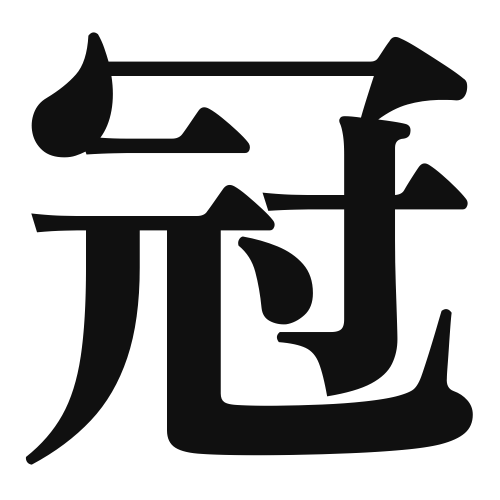1. Overview of Meaning
The kanji “冠” (kan) means “crown” or “headgear.” It represents a type of ornamental headpiece worn by royalty or during special ceremonies, symbolizing authority and status.
2. Formation and Radical
Formation of the Kanji: The kanji “冠” is a compound character that combines elements to convey its meaning. It consists of the radical “亠” (lid) at the top, which suggests something that covers or is placed on top, and the character “官” (official) at the bottom, indicating a connection to authority.
Radical: The radical of “冠” is “亠,” which is often associated with things that are placed on top or cover something.
3. Examples of Usage
Common Words and Phrases: Some common words that include “冠” are:
- 冠婚葬祭 (kankonsousai) – ceremonies of marriage, funerals, and other important events
- 冠詞 (kanshi) – article (in grammar)
Example Sentences in Daily Conversation:
- 彼は王の冠をかぶっている。 (Kare wa ō no kan o kabutte iru.) – He is wearing the king’s crown.
- この冠は特別な儀式のために作られました。 (Kono kan wa tokubetsu na gishiki no tame ni tsukuraremashita.) – This crown was made for a special ceremony.
4. Synonyms and Antonyms
Similar Kanji: A similar kanji is “帽” (bō), which means “hat” or “cap.” While both refer to headgear, “冠” specifically denotes a ceremonial or royal headpiece, whereas “帽” refers to more casual or everyday headwear.
Antonyms: An antonym could be “裸” (ra), meaning “naked” or “bare,” which represents the absence of covering, contrasting with the idea of a crown as a decorative headpiece.
5. Cultural and Historical Background
Connection to Japanese Culture: In Japan, the “冠” has significant cultural importance, especially in traditional ceremonies such as weddings and imperial events. It symbolizes not only authority but also the rich history of Japanese nobility.
Proverbs and Idioms: One common saying is “冠をかぶる” (kan o kaburu), which means “to take on a position of authority.” This reflects the idea that wearing a crown signifies leadership and responsibility.
